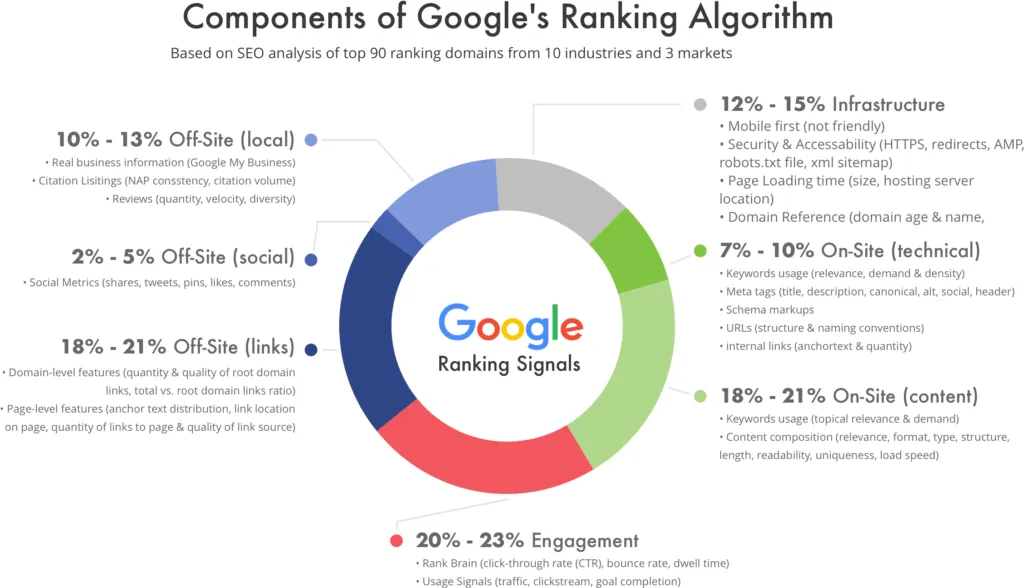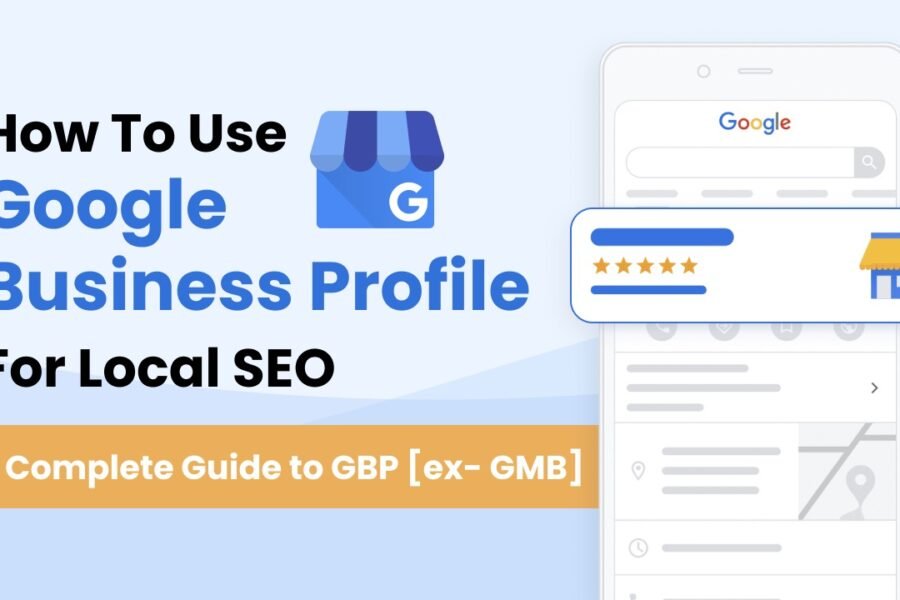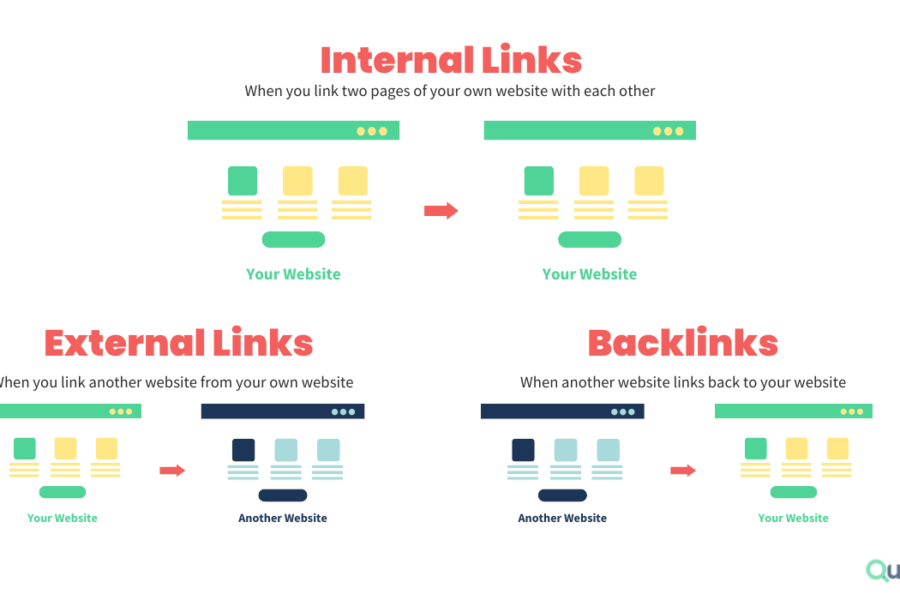Introduction to Google’s Core Algorithm Updates
Google’s core algorithm updates are significant changes made to the company’s search engine algorithms, which dictate how websites are ranked in search results. These updates are designed to improve the quality of search results, aiming to provide users with the most relevant and authoritative content available on the web. Each core update has specific objectives that often align with enhancing user experience, adjusting how Google interprets relevance, and addressing evolving search behaviors.
The frequency of these updates can vary; while there is no set schedule, Google typically implements core updates several times a year. Each update may influence the performance of websites in search rankings, impacting visibility and traffic. For website owners and SEO experts, adapting to these algorithm changes is crucial, as failure to comply with best practices may result in decreased site performance.
Understanding Google’s core algorithm updates is essential not only for maintaining current rankings but also for devising a long-term SEO strategy. These updates often reflect a shift in Google’s priorities, emphasizing the importance of content quality, user engagement, and site speed. As Google strives to offer the most useful information, it regularly assesses website content to determine its relevance and reliability, which consequently ranks more deserving websites higher.
Moreover, the implications of these updates extend beyond simple ranking changes. Business owners, digital marketers, and website developers must continuously monitor their site performance and make necessary adjustments in response to the introduced changes. Staying informed about core algorithm updates ensures that strategies remain aligned with search engine requirements, ultimately fostering better visibility in search engine results pages (SERPs).
Overview of the Latest Core Algorithm Update
Google’s latest core algorithm update, implemented in October 2023, represents a significant evolution in the search engine’s ranking processes. This update has been designed to enhance the quality and relevance of search results by refining how content is evaluated. Unlike previous updates that may have focused on specific factors such as keyword usage or backlink profiles, this iteration emphasizes a more holistic approach to assessing content quality and user experience.
One of the notable changes in this core update is the increased emphasis on content depth and authority. Google aims to prioritize websites that provide comprehensive, well-researched information on a topic. This shift encourages content creators to produce detailed articles that not only cover surface-level insights but also delve into nuances and complexities. Additionally, the update has introduced a greater focus on semantic relevance, meaning that variations of keywords and related topics are considered essential for content ranking. This reinforces the notion that content should be valuable and informative rather than merely optimized for specific phrases.
Another element of this update is the adjustment of ranking signals related to user engagement. Factors such as time on page, bounce rates, and interactions are being scrutinized more closely. Websites that successfully keep users engaged and satisfied with their content will likely see a positive impact on their rankings. These changes highlight Google’s ongoing commitment to enhancing the user experience and ensuring that search results reflect high-quality, user-focused content.
Overall, this update signals a pivotal shift in Google’s approach towards delivering search results. By focusing on high-quality, authoritative content, Google is attempting to create a more beneficial experience for users while adapting to the evolving landscape of online information consumption.
Impact on Search Rankings and Traffic
The latest core algorithm update from Google has generated significant changes in search rankings and website traffic across various sectors. Understanding the implications of this update is crucial for webmasters and marketers aiming to optimize their online presence. This algorithm, designed to enhance user experience, has altered the landscape, leading to fluctuations in visibility for many websites.
One of the most notable impacts has been observed among e-commerce sites, which often rely heavily on organic search to drive traffic. Websites that have rich content, user-friendly navigation, and customer reviews have experienced improved rankings. For instance, a popular e-commerce platform focusing on quality product descriptions and credible reviews saw a 30% increase in organic traffic shortly after the update. This surge can be attributed to the algorithm favoring authoritative content that provides real value to users.

Conversely, websites that lacked comprehensive content or were deemed offer low-quality material faced significant placement drops in search results. A news blog that routinely published articles with misleading headlines and inadequate research found itself losing 50% of its traffic post-update. This scenario demonstrates that websites must adhere to best practices regarding content quality and relevance to retain their search visibility.
Furthermore, local businesses have also reported mixed outcomes. For those that have optimized their Google My Business profiles and ensured consistent citations across the web, there has been a noteworthy boost in local search rankings. However, those that have neglected these optimization strategies have seen their local visibility diminish. A case study of a local restaurant that implemented thorough optimization strategies post-update illustrates how targeted efforts can substantially enhance online presence.
In summary, the latest core algorithm update has reshaped the search rankings realm, creating both opportunities and challenges for various types of websites. By prioritizing quality and relevance in their digital strategies, businesses can navigate this evolving landscape effectively.
Core Principles of SEO in Light of the Update
The landscape of Search Engine Optimization (SEO) is constantly evolving, especially in response to updates in Google’s core algorithms. Despite these changes, several core principles remain crucial for marketers and website owners to effectively align their SEO strategies with Google’s expectations. The focus is now more than ever on content quality, relevance, and user experience, which serve as the foundation for successful SEO practices.
Content quality continues to be paramount. Google has made it clear that it prioritizes high-quality content that provides value to users. This means creating content that is not only informative and engaging but also well-researched and accurate. Writers should aim to produce content that addresses users’ needs and questions. This commitment to quality can lead to increased user engagement and, ultimately, better rankings in search results.
Another essential principle is relevance. In the wake of the latest update, aligning content with user intent is imperative. Marketers should conduct thorough keyword research to understand what potential customers are searching for. This entails using semantic keywords and related terms within the content. The goal is to ensure that the content resonates with what users are looking for, thereby enhancing its relevance and authority on the subject matter.
User experience (UX) cannot be overlooked in the current SEO landscape. A website that is easy to navigate and offers a seamless browsing experience will likely perform better in search rankings. Factors such as page load speed, mobile responsiveness, and intuitive site architecture all contribute to creating a positive user experience. By optimizing these elements, website owners can increase their chances of meeting Google’s expectations and retaining visitors.
In conclusion, while Google’s core algorithm updates may shift the SEO landscape, fundamental principles like content quality, relevance, and user experience remain vital. By focusing on these areas, businesses can ensure their SEO strategies are effective and aligned with best practices.
Best Practices to Adapt to the Update
Adapting to Google’s latest core algorithm update requires a strategic approach that prioritizes user experience, high-quality content, and site performance. One of the first best practices is to ensure that your content is both relevant and informative. Focus on creating comprehensive articles that answer questions users are likely to have. This includes utilizing topic clusters and related keywords to provide deeper context and enhance semantic relevance. Engaging content that aligns with search intent is more likely to rank higher in light of algorithm changes.

In addition to content quality, optimizing for mobile devices is crucial. As mobile-friendliness has become a significant ranking factor, ensure that your site is responsive and provides a seamless experience across various devices. Tools like Google’s Mobile-Friendly Test can help identify areas for improvement. Furthermore, page speed should not be overlooked. Optimize images, leverage browser caching, and minimize redirects to improve load times. A fast-loading website significantly enhances user experience, which is a key consideration for Google’s algorithms.
Another important practice is to regularly audit your website. Use analytics tools to monitor your site performance and user behavior. Identify pages that are underperforming and figure out ways to improve them, whether by updating content, improving internal linking, or enhancing metadata. Engaging user feedback is also effective; consider soliciting reviews and input to gain insights into areas requiring enhancement.
Lastly, staying updated with industry trends and algorithm changes is essential. Follow reputable SEO blogs, attend webinars, and participate in professional forums. This proactive approach will enable you to adapt your strategies swiftly and effectively, ensuring your website remains optimally positioned in response to future updates.
Monitoring Changes in Performance
In the wake of Google’s latest core algorithm update, it is imperative for website owners and digital marketers to closely monitor their website’s performance. This process not only aids in understanding the immediate impact of the update but also provides valuable insights into long-term strategy adjustments. By employing various tools and metrics, businesses can identify shifts in traffic, rankings, and overall site health, which are essential in ensuring sustained online visibility.
One of the fundamental tools to utilize is Google Analytics, which allows users to assess changes in traffic patterns, user engagement, and bounce rates following the algorithm change. By comparing data before and after the update, website owners can better understand how visitor behavior may have shifted, enabling them to make informed decisions regarding content and optimization strategies. Furthermore, tracking organic search traffic through Google Search Console can highlight fluctuations in keyword rankings, identifying areas that may require immediate attention.
It is also advisable to pay close attention to core web vitals. Google’s focus on user experience means that metrics such as page loading speed, interactivity, and visual stability can significantly influence rankings. Regularly assessing these factors through tools like PageSpeed Insights can help maintain site performance in line with Google’s expectations. Additionally, monitoring any changes in backlink profiles is essential, as quality backlinks remain crucial in shaping domain authority and search engine ranking.
Integrating social media analytics into the monitoring process can provide further context regarding audience engagement and perception following the update. Social signals can play a role in driving traffic and enhancing visibility. In a rapidly evolving digital landscape, maintaining an agile approach to performance monitoring will be vital in adapting effectively to future algorithm changes and ensuring ongoing success. Establishing a systematic routine for assessing these various metrics can empower businesses to navigate the complexities of Google’s algorithm landscape.
Common Misconceptions About Algorithm Updates
Google’s core algorithm updates often evoke a flurry of reactions, some based on sound understanding and others stemming from misconceptions that can cloud judgment. One prevalent myth is that the algorithm changes occur randomly and without any discernible pattern. In reality, Google employs a systematic approach to improve search results, and while individual updates may seem abrupt, they are part of an ongoing effort to enhance user experience and content quality.
Another commonly held belief is that these updates target specific websites or businesses. In truth, Google’s algorithm is designed to evaluate content quality across the web rather than punishing specific domains. Updates aim to prioritize high-quality, relevant content that serves user intent, promoting a healthier digital ecosystem overall. Therefore, businesses focusing on creating valuable content are more likely to benefit from these changes, rather than fear them.
Understanding Algorithm Updates: No Penalties, Just Evolving SEO
Equally misleading is the idea that a website will be “penalized” a fixed number of times due to an algorithm update. Some site owners have reported fluctuations in rankings, leading to anxiety about potential penalties. However, it is essential to understand that ranking changes do not always indicate penalties. Updates may simply reflect the evolution of search intent or changes in competitor strategies.
Furthermore, some believe that merely adhering to certain SEO tactics can insulate them from algorithm updates. While best practices such as optimizing for mobile and improving site speed are critical, the central focus of any effective SEO strategy should be on delivering high-quality, user-centric content. As Google continues to evolve, the importance of meaningful engagement and relevance will increasingly dictate the success of websites in search results.
By dispelling these misconceptions, businesses can align their SEO practices more closely with Google’s intentions, ultimately leading to improved visibility and user satisfaction.
Conclusion
As we delve into the nuances of Google’s latest core algorithm update, it is evident that adaptability and preparedness are crucial for sustaining success in search engine optimization (SEO). The rapid evolution of Google’s algorithms requires digital marketers and website owners to stay informed about the shifts that can impact their online presence. By understanding the key factors driving these changes—such as quality content, user experience, and mobile optimization—professionals can reshape their SEO strategies to better align with the current landscape.
Moreover, embracing a holistic approach to SEO, which includes technical SEO, content relevance, and off-page factors, can further enhance a website’s visibility in search results. It is essential to recognize that the focus should not solely be on meeting the algorithm’s requirements but rather on providing value to users. High-quality, informative content that addresses user intent is paramount to thriving under such updates.
Continuous learning and adaptation are intertwined with effective SEO practices. As new trends emerge and user behaviors evolve, an agile mindset will enable businesses to pivot their strategies promptly. Regularly analyzing website performance, conducting competitor research, and leveraging analytics tools are vital components of this iterative process. This proactive approach empowers businesses to not only endure algorithm changes but also capitalize on opportunities that arise from them.
In summary, navigating the complexities of Google’s core algorithm update necessitates a commitment to constant improvement and flexibility. By remaining curious and informed, SEO professionals can ensure that their strategies are not just reactive but rather anticipatory. Embracing change and fostering a culture of adaptability will ultimately lead to greater resilience in the face of an ever-changing digital landscape.
FAQs About Google’s Core Algorithm Update
As businesses and webmasters navigate the complexities of search engine optimization, understanding Google’s core algorithm update becomes vital. Below are frequently asked questions that clarify aspects of these updates and their implications.
What is a core algorithm update?
A core algorithm update refers to significant changes Google makes to its search algorithms and systems. These updates aim to improve the overall relevance and quality of search results, ensuring users receive the most pertinent information. Such updates are typically rolled out a few times a year, with each having the potential to impact search rankings significantly.
How do these updates affect my website?
The impact of a core algorithm update on a website can vary widely. Businesses may experience fluctuations in their search rankings. Some websites may see an increase in visibility while others may fall. Generally, updates prioritize content quality, so sites that adhere to best practices and provide informative, relevant content tend to fare better.
Can I recover from a drop in rankings due to an algorithm update?
Yes, recovery is possible, albeit it may require time and effort. To rebound from a decline in rankings, businesses should reassess their content strategies. Focus on enhancing content quality, ensuring that it is original, valuable, and relevant to your target audience. Regularly update and optimize web pages. Moreover, it’s essential to monitor search performance and adapt to future updates to maintain and improve rankings.
Are there specific indicators to look for post-update?
After the rollout of a core algorithm update, website owners should monitor metrics such as organic traffic, bounce rate, engagement metrics, and conversion rates. If any anomalies occur, dissecting the available analytics can provide insights into which content may need optimization, allowing businesses to make informed adjustments that align with Google’s evolving standards.




Leave a Comment